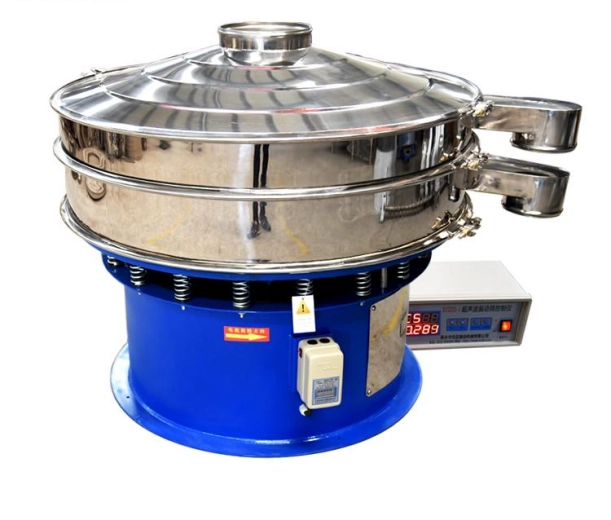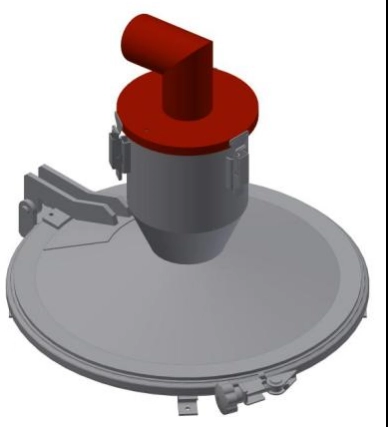Content Menu
● What Is Powder Coating?
● Why Choose a DIY Powder Coating System?
● Essential Components of a DIY Powder Coating System
>> Powder Coating Gun
>> Powder Coating Powders
>> Curing Oven
>> Air Supply
>> Preparation Tools
● Step-by-Step DIY Powder Coating Process
>> 1. Surface Preparation
>> 2. Setup Your Work Area
>> 3. Assemble the Powder Coating Gun
>> 4. Apply the Powder
>> 5. Curing
>> 6. Finishing Touches
● Safety Considerations
● Tips for Successful DIY Powder Coating
● Advantages and Limitations of DIY Powder Coating
● Common Applications of DIY Powder Coating
● Frequently Asked Questions (FAQs)
● Citations:
Powder coating is a popular finishing technique known for its durability, vibrant colors, and environmentally friendly nature. Traditionally, powder coating has been a professional service, but with advances in technology and availability of DIY kits, enthusiasts and small businesses can now achieve professional-quality powder-coated finishes at home. This article explores the essentials of a do-it-yourself (DIY) powder coating system, guiding you through the equipment, process, safety considerations, and tips for success.

What Is Powder Coating?
Powder coating is a dry finishing process where finely ground particles of pigment and resin are electrostatically charged and sprayed onto a grounded metal surface. The coated part is then heated in an oven, causing the powder to melt and form a smooth, durable, and uniform finish. Compared to traditional liquid paint, powder coating offers superior resistance to chipping, scratching, fading, and corrosion.
Why Choose a DIY Powder Coating System?
DIY powder coating systems allow hobbyists, restorers, and small-scale fabricators to apply professional-grade finishes without outsourcing. Benefits include:
- Cost-effectiveness: Basic kits and powders are affordable, often under $100 for entry-level setups.
- Customization: Change colors and finishes easily on small projects.
- Durability: Achieve tough, long-lasting coatings suitable for automotive parts, tools, household items, and more.
- Environmental safety: Powder coatings emit negligible volatile organic compounds (VOCs) compared to liquid paints.
Essential Components of a DIY Powder Coating System
Powder Coating Gun
The heart of the system is the powder coating gun, which uses electrostatic charge to attract powder particles to the metal surface. Entry-level kits typically include:
- Spray gun with adjustable voltage settings (e.g., 15kV to 25kV)
- Powder cup or hopper to hold the powder
- Ground clamp to connect the part to the electrical ground
- Air hose connection for compressed air supply
Advanced guns offer features like color-coded cables, larger ground clamps, and improved powder flow for consistent coverage.
Powder Coating Powders
Powders come in various colors, textures, and finishes such as matte, gloss, metallic, or wrinkle. They are formulated for different substrates and curing temperatures, usually around 180°C to 200°C (356°F to 392°F).
Curing Oven
After application, the powder-coated parts must be heated to cure the finish. A dedicated electric oven, toaster oven, or convection oven can be used, but it should never be the same oven used for food preparation due to toxic fumes and contamination risks. The oven temperature and curing time depend on the powder manufacturer's specifications, typically 10-20 minutes after the part reaches the target temperature.
Air Supply
A compressed air source providing 10 to 15 psi continuous pressure is required to operate the spray gun and fluidize the powder.
Preparation Tools
Proper surface preparation is critical for adhesion and finish quality. This includes:
- Degreasing agents or solvents like acetone
- Sandblasting or sanding to remove rust and old coatings
- Cleaning with TSP (trisodium phosphate) or similar cleaners
- Hanging racks or hooks for grounding and coating application
Step-by-Step DIY Powder Coating Process
1. Surface Preparation
Clean the part thoroughly to remove oils, dirt, and rust. Sandblasting is highly recommended to create a rough surface for better powder adhesion. After blasting, wash the part with TSP solution and rinse with clean water or reverse osmosis water. Finally, wipe down with acetone to remove any remaining contaminants.
2. Setup Your Work Area
Arrange your workspace near a ventilation system to handle powder overspray and curing fumes safely. Hang the part on a grounded rack or hook to ensure electrical continuity.
3. Assemble the Powder Coating Gun
Connect the powder cup, air hose, ground clamp, and power supply. Adjust the voltage and powder feed knobs to achieve a consistent powder cloud when spraying.
4. Apply the Powder
Hold the gun about 8 inches from the part and spray evenly, starting with edges and hard-to-reach areas. The electrostatic charge will attract powder to the metal surface, creating a uniform layer. If mistakes occur, powder can be blown off with compressed air and reapplied.
5. Curing
Place the coated part in the preheated oven at the recommended temperature (around 180°C). Cure for 10-20 minutes after the part reaches temperature. Avoid using gas ovens due to safety risks. After curing, allow the part to cool naturally.
6. Finishing Touches
Inspect the finish for uniformity and defects. Powder coating results in a smooth, tough surface that is ready for use.
Safety Considerations
- Never use a food oven for curing powder coatings.
- Work in a well-ventilated area to avoid inhaling powder or fumes.
- Wear protective gear such as gloves, masks, and eye protection.
- Ground all equipment and parts properly to prevent electrical hazards.
- Follow powder manufacturer instructions for temperature and curing times.
Tips for Successful DIY Powder Coating
- Use a dedicated electric oven for curing.
- Ensure the part is grounded well to attract powder evenly.
- Apply thin, even coats to avoid runs or clumps.
- Experiment with small parts first to master the technique.
- Clean parts thoroughly to avoid adhesion failure.
- Maintain your equipment regularly for consistent performance.
Advantages and Limitations of DIY Powder Coating
| Advantages | Limitations |
| Cost-effective for small projects | Limited oven size restricts part size |
| Durable, professional finish | Requires careful surface prep |
| Environmentally friendly | Initial learning curve |
| Quick color changes | Safety precautions needed |
Common Applications of DIY Powder Coating
- Automotive parts such as wheels, frames, and engine components
- Bicycle frames and parts
- Metal furniture and fixtures
- Tools and hardware
- Home décor items and art projects
Frequently Asked Questions (FAQs)
Q1: Can I use a regular kitchen oven for curing powder coating?
No, you should never use a kitchen oven that is also used for food preparation due to toxic fumes and contamination risks. Use a dedicated electric oven or toaster oven for curing only.
Q2: What air pressure is needed for a DIY powder coating gun?
Typically, 10 to 15 psi continuous air pressure is required to operate the spray gun effectively.
Q3: How do I prepare parts before powder coating?
Parts should be sandblasted or sanded to remove rust and old paint, cleaned with degreasers or TSP, rinsed, and wiped with acetone to ensure a clean surface for powder adhesion.
Q4: How long and at what temperature should I cure powder-coated parts?
Most powders cure at around 180°C (356°F) for 10-20 minutes after the part reaches the set temperature. Always follow the powder manufacturer's instructions.
Q5: Can I remove powder coating if I make a mistake?
Yes, if the powder has not been cured yet, you can blow it off with compressed air and reapply.

---
Citations:
[1] https://www.rodauthority.com/tech-stories/paint-body/powder-coating-at-home-a-how-to-guide-for-the-home-handyman/
[2] https://www.powdercoatguide.com/2012/11/welcome-to-powder-coating-complete-guide.html
[3] https://www.youtube.com/watch?v=85ZqeC3xXFc
[4] https://www.garagejournal.com/forum/threads/powder-coating-diy-your-opinion.47556/
[5] https://www.instructables.com/Powder-Coating-Basics/
[6] https://www.youtube.com/watch?v=toKvQW3GE7s
[7] https://patents.google.com/patent/CN217190501U/en
[8] https://indystry.cc/how-to-diy-powder-coating/
[9] https://www.163.com/dy/article/IMDSFAO20556643W.html
[10] https://patents.google.com/patent/WO2019000894A1/zh
---
Hot Tags: China, Global, OEM, private label, manufacturers, factory, suppliers, manufacturing company










































 .
. 